Category: Conlang Year
-

Day 191: July 9, 2024
Goal: Create a variety of negative y/n questions Note: This means the verb is negated (e.g. “Didn’t you see the mouse?”). Tip: Negated forms may indicate the speaker believes the clause should be true. Work focus: Create/Make/List Today’s focus shifts to negative y/n questions, such as “Didn’t you see the mouse?” or “Isn’t that bread…
-
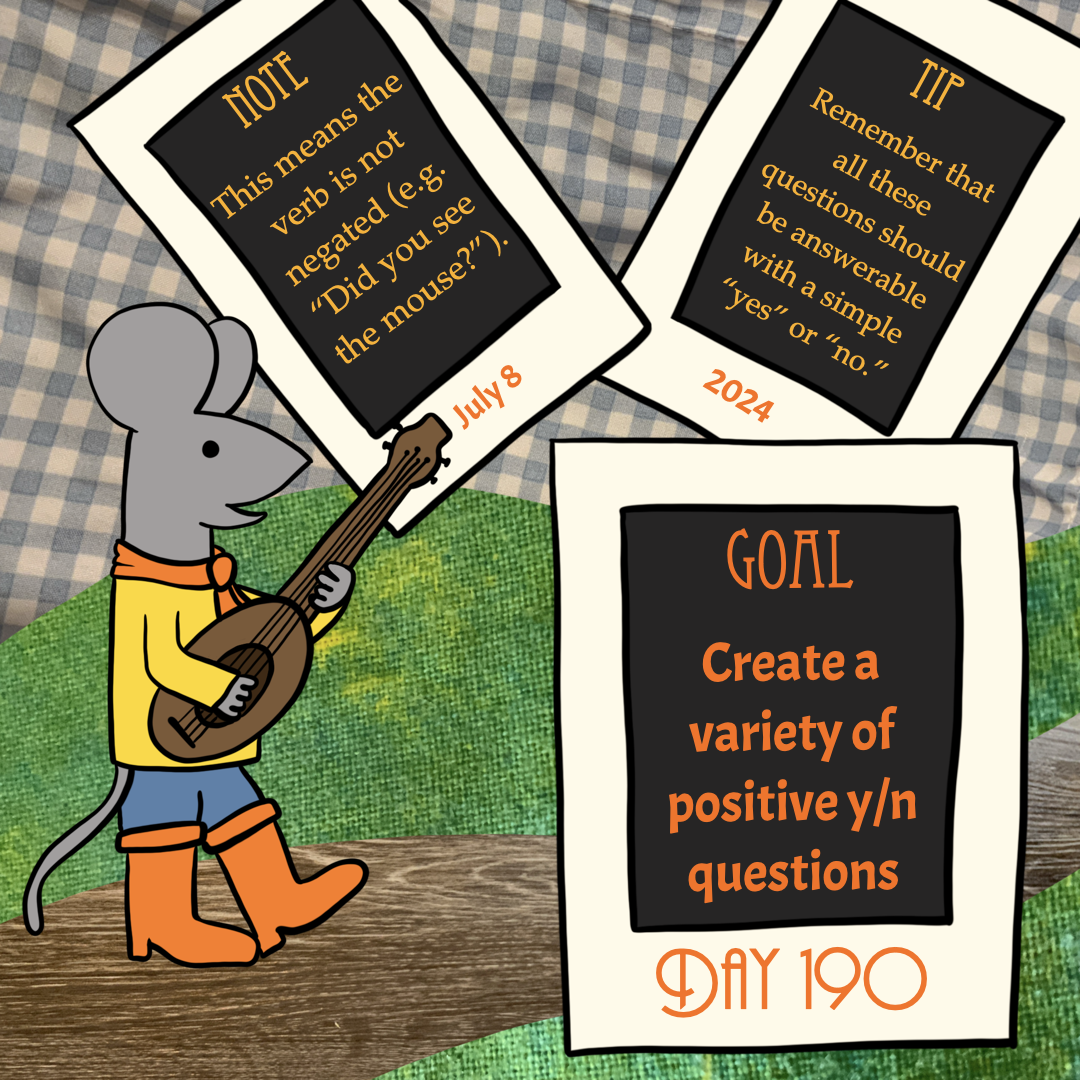
Day 190: July 8, 2024
Goal: Create a variety of positive y/n questions Note: This means the verb is not negated (e.g. “Did you see the mouse?”). Tip: Remember that all these questions should be answerable with a simple “yes” or “no.” Work focus: Create/Make/List First, create any new particles, inflections, or auxiliaries that you need for forming y/n questions. …
-
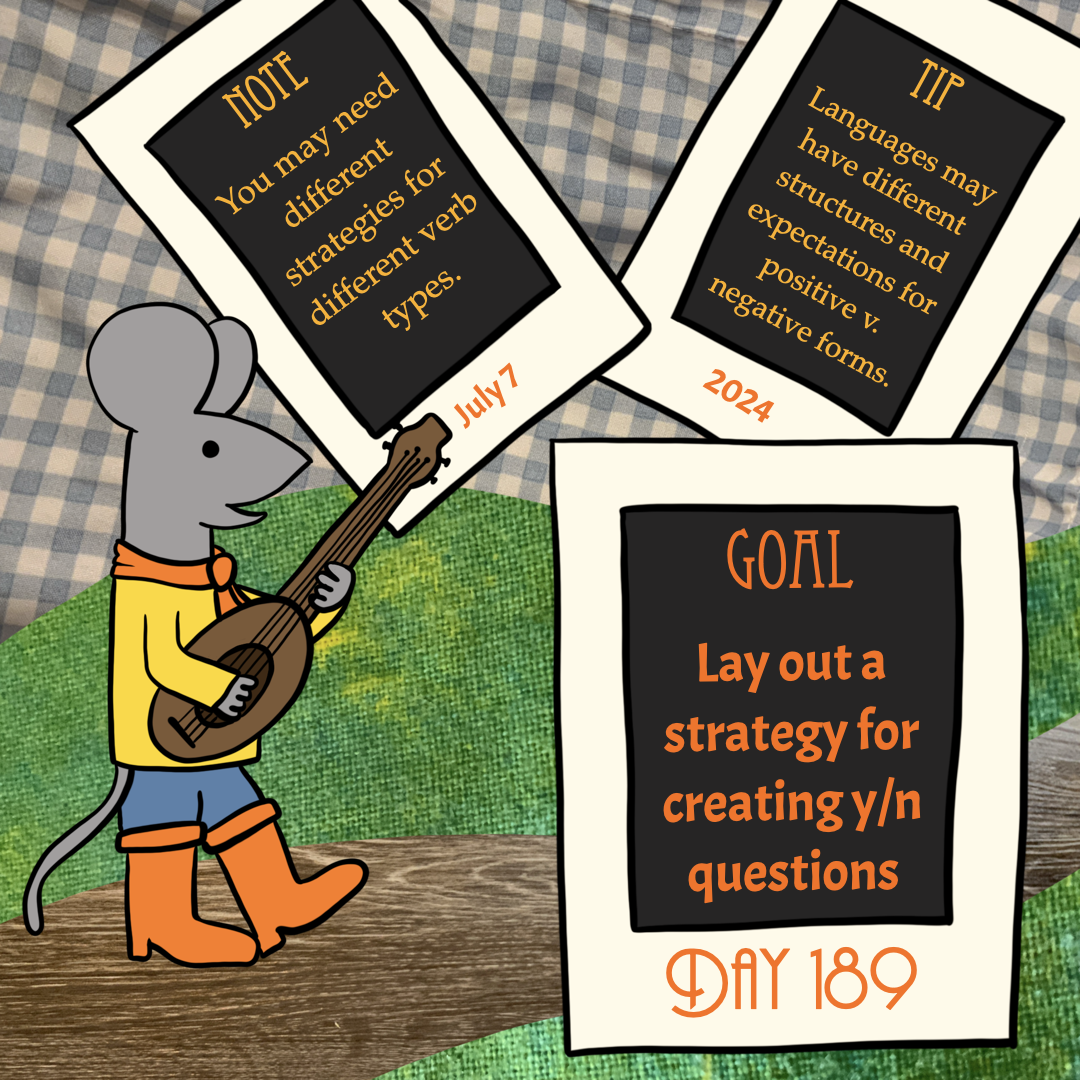
Day 189: July 7, 2024
Goal: Lay out a strategy for creating y/n questions Note: You may need different strategies for different verb types. Tip: Languages may have different structures and expectations for positive v. negative forms. Work focus: Organize/Plan/Structure Select a strategy for creating y/n questions. You may need to consider having multiple strategies if you have different syntactic…
-
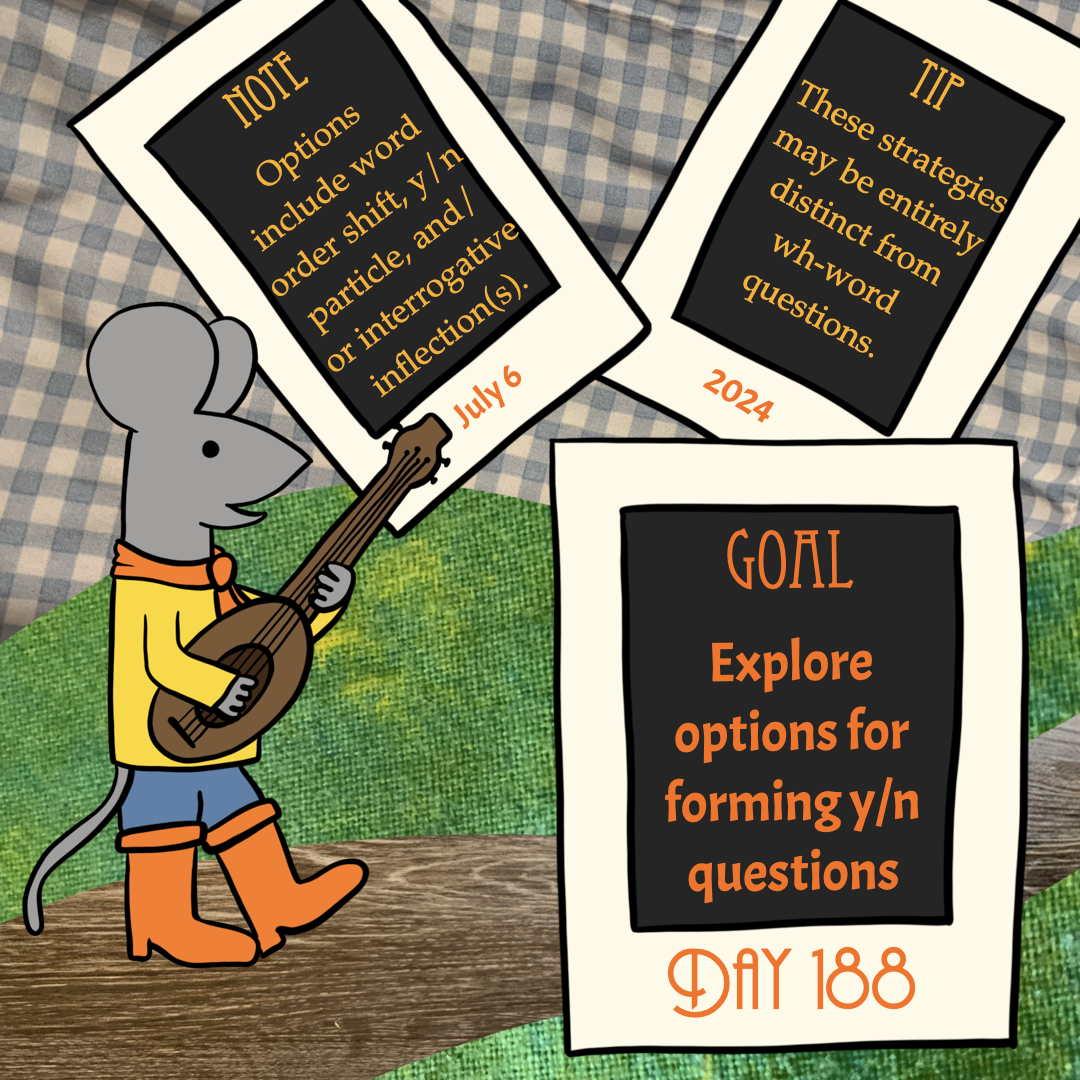
Day 188: July 6, 2024
Goal: Explore options for forming y/n questions Note: Options include word order shift, y/n particle, and/or interrogative inflection(s). Tip: These strategies may be entirely distinct from wh-word questions. Work focus: Learn/Brainstorm/Try It’s time to start thinking about questions! The first focus is on yes/no questions, or questions that can be answered with a simple “yes”…
-
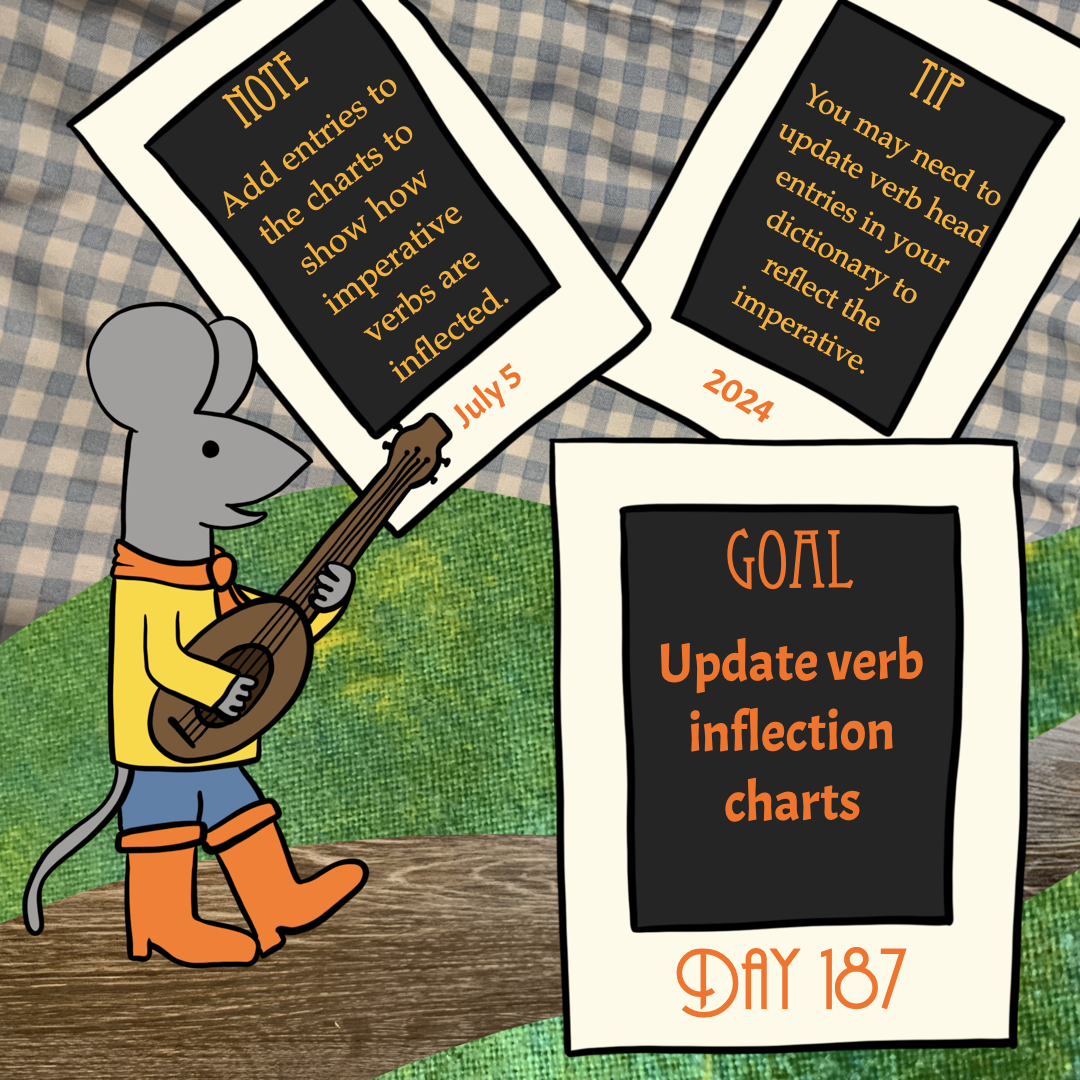
Day 187: July 5, 2024
Goal: Update verb inflection charts Note: Add entries to the charts to show how imperative verbs are inflected. Tip: You may need to update verb head entries in your dictionary to reflect the imperative. Work focus: Organize/Plan/Structure Review your verb inflection charts and add new entries for the imperative forms and their inflections (remember that…
-

Day 186: July 4, 2024
Goal: Write a section on imperatives Note: Incorporate the examples you created yesterday in your description. Tip: Remember to discuss any distinctions you make in imperative forms. Work focus: Solidify/Write/Share Formalize your work on imperative clauses by writing a section in your language documentation to describe them and provide examples, being sure to showcase their…
-
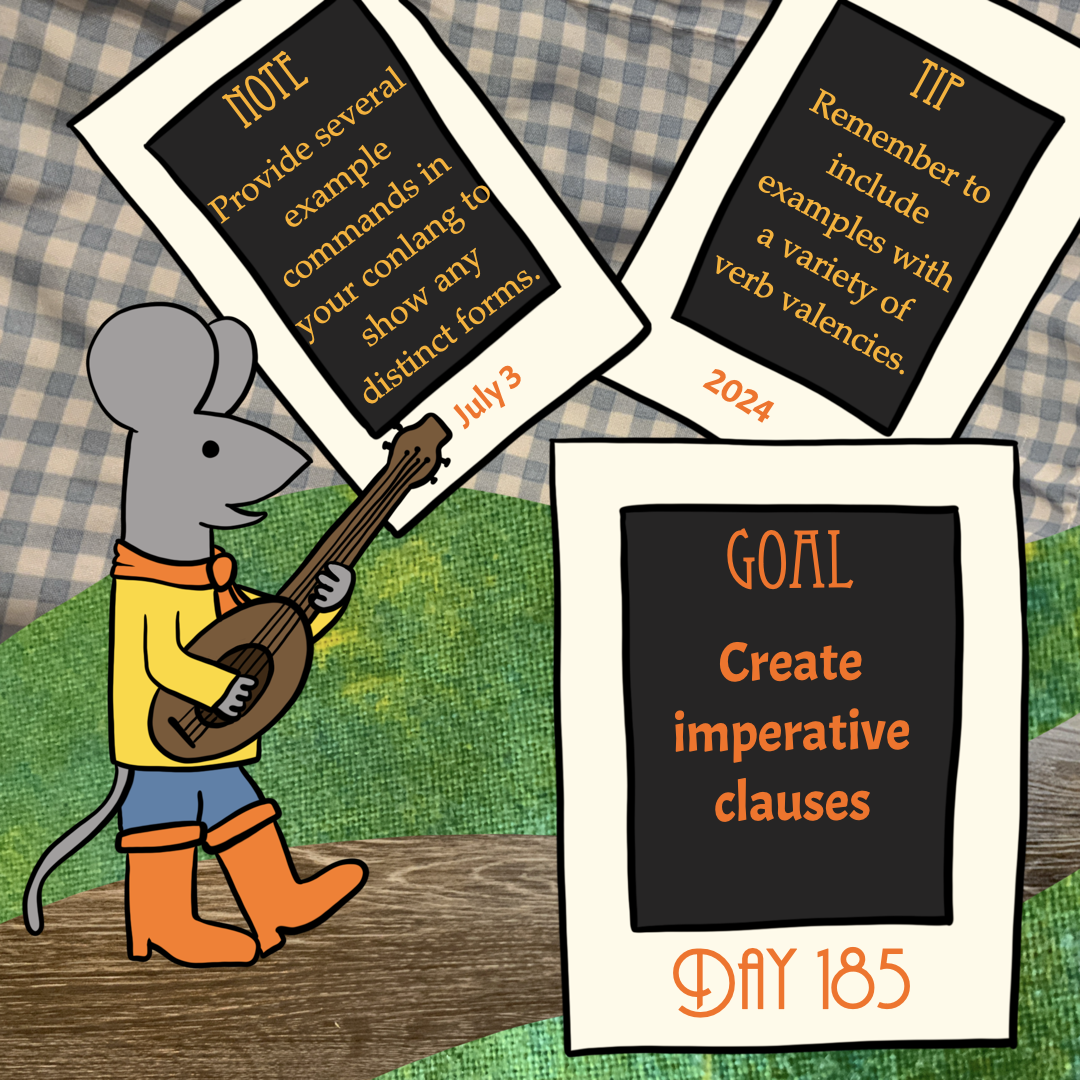
Day 185: July 3, 2024
Goal: Create imperative clauses Note: Provide several example commands in your conlang to show any distinct forms. Tip: Remember to include examples with a variety of verb valencies. Work focus: Create/Make/List Today’s goal is to put your plans into action and create imperative clauses. Provide several example commands in your conlang, being sure you demonstrate…
-
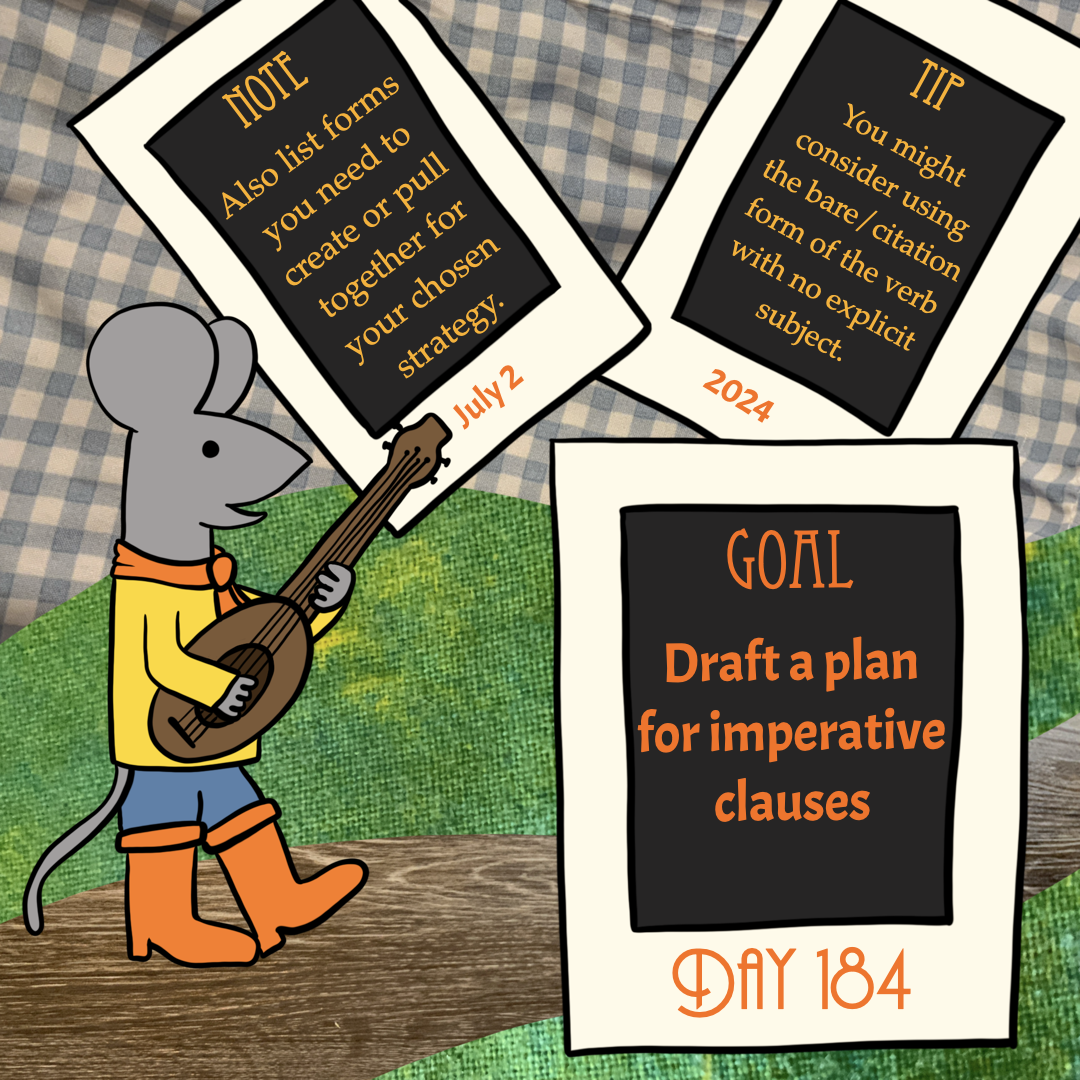
Day 184: July 2, 2024
Goal: Draft a plan for imperative clauses Note: Also list forms you need to create or pull together for your chosen strategy. Tip: You might consider using the bare/citation form of the verb with no explicit subject. Work focus: Organize/Plan/Structure Now that you have had some fun exploring imperatives, select a strategy or set of…
-
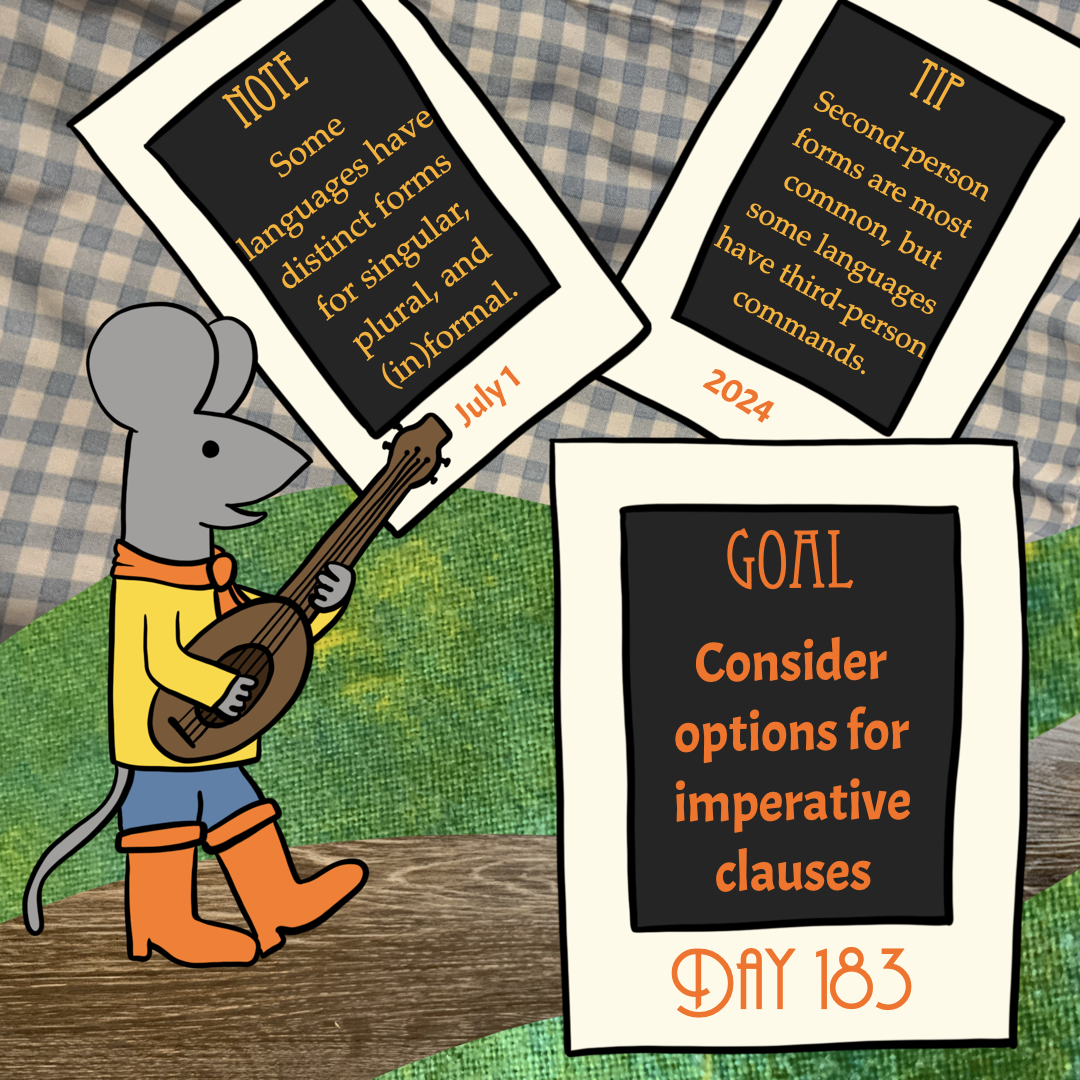
Day 183: July 1, 2024
Goal: Consider options for imperative clauses Note: Some languages have distinct forms for singular, plural, and (in)formal. Tip: Second-person forms are most common, but some languages have third-person commands. Work focus: Learn/Brainstorm/Try Today’s focus shifts to imperative clause structures! Take some time to explore how a variety of languages form imperative clauses to get some…
-
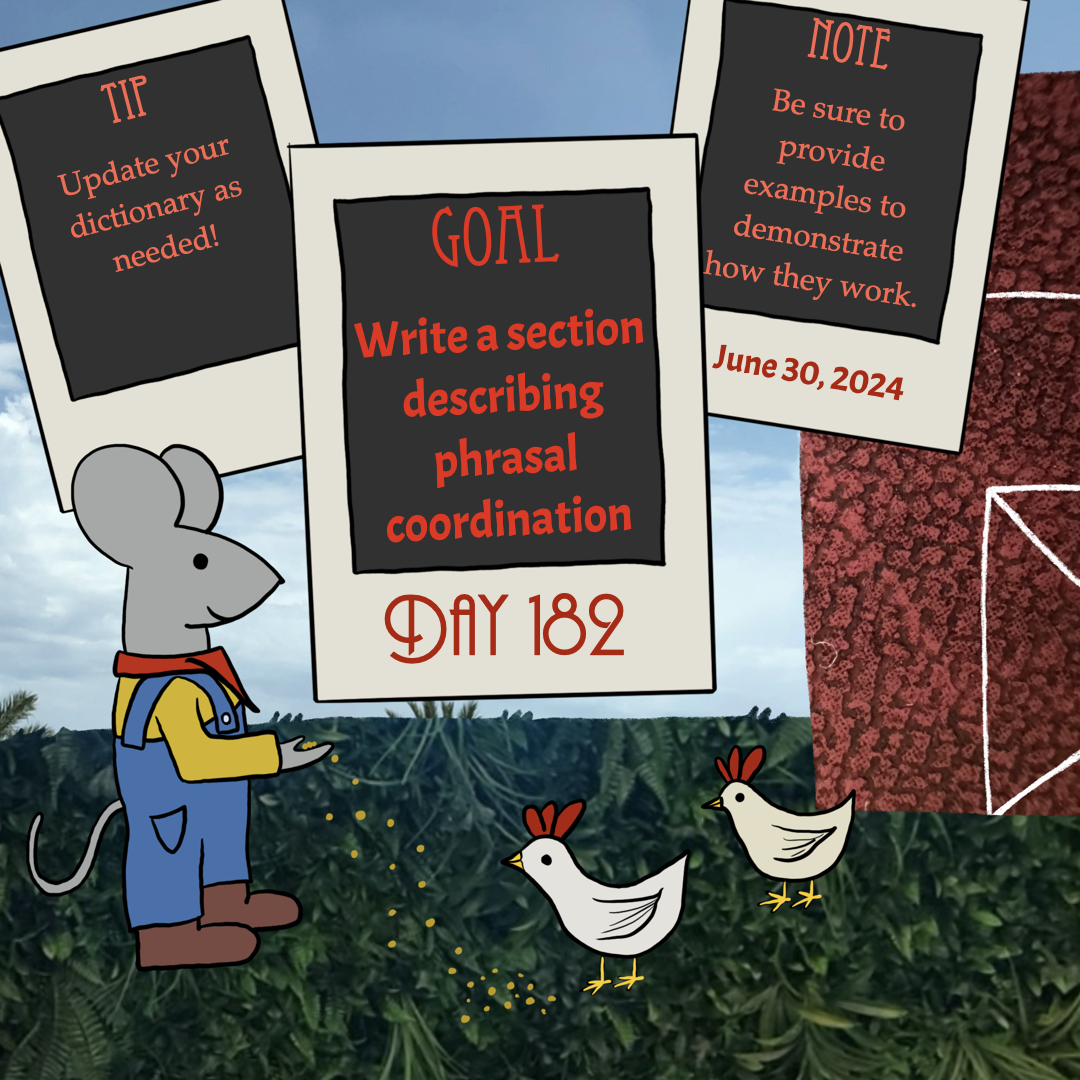
Day 182: June 30, 2024
Goal: Write a section describing phrasal coordination Note: Be sure to provide examples to demonstrate how they work. Tip: Update your dictionary as needed! Work focus: Solidify/Write/Share Use today to take a step back and update your language document. Write a section covering phrasal coordination, incorporating the examples you’ve created to demonstrate how they work…